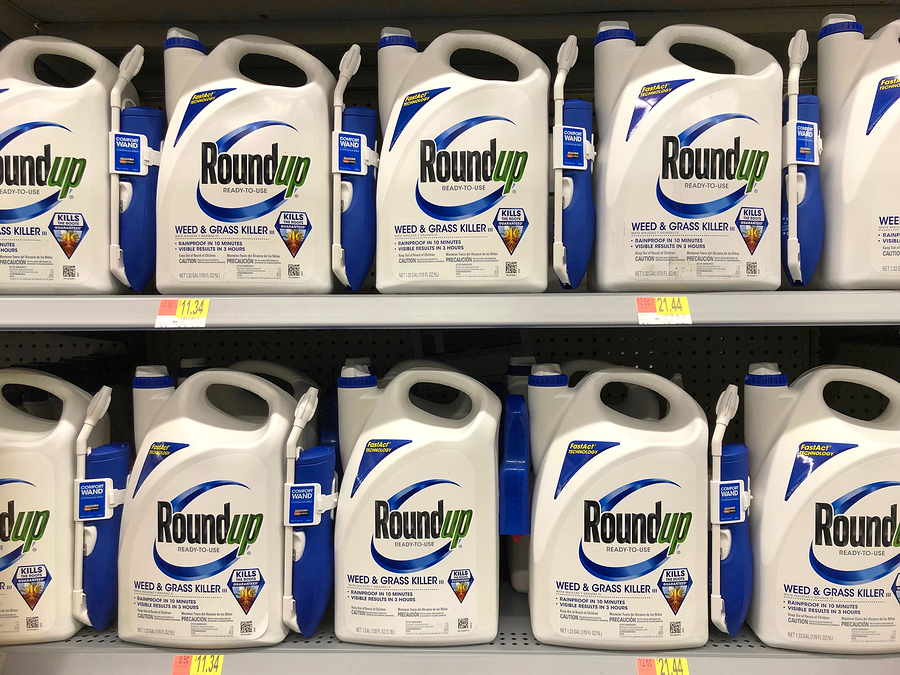As the Environmental Protection Agency (EPA) decides whether to re-approve Bayer-Monsanto’s glyphosate, the weed-killing ingredient in Roundup, for another fifteen years, a new report finds ninety percent of the families tested had glyphosate in their bodies, and most children had much higher amounts than their parent.
The Center for Environmental Health (CEH), a non-profit that strives to protect people from toxins, conducted the bio-monitoring study. They reached out to parents who have reported or researched chemicals in children in the past and asked them if they wanted to participate.
RELATED STORY
CEH used an independent lab to test twelve parent-child pairs who all reported intentionally trying to avoid pesticide exposure.
The lab found that out of twelve children, nine had higher concentrations of the weed toxin in their body than their parents. Half of the children had double the amount of glyphosate in their body as their parents, and one child’s body had nearly one-hundred times more weed killer that the parent.
There have been other bio-monitoring studies to find the weed killer in people’s bodies, but this was the first to compare the amount in kids to their parents.
RELATED STORY
CEH’s Pollution Prevention Director, Sue Chaing, also participated in the study. She recently worked on a separate CEH report that found the Roundup toxin glyphosate in nearly 70 percent of oat-based food items on school menus. Chaing said:
“Because I work on this issue, I was not necessarily surprised (by the bio-monitoring results), but I’m definitely concerned and disturbed.”1
Chaing indicated she is very careful about the foods she and her son Gabe eat. She chooses organic food and cereal whenever possible. However, despite her best efforts, the lab found glyphosate in Gabe’s body at much higher levels than his mother’s.
RELATED STORY
Asa Bradman, Environmental Health Scientist and Associate Director of the Center for Environmental Research and Children’s Health at UC Berkeley, has studied pesticide exposure for decades. Bradman said:
“That doesn’t surprise me and that’s true actually for a lot of environmental contaminants. Kids often have higher levels, simply because they eat more, they drink more, and they breathe more per unit of body weight than adults.”1
Bradman indicated that while glyphosate residue in food is likely the primary source of exposure, kids are also more likely to come in contact with the chemicals at schools or parks, adding:
“It’s important for us to understand exposures and measure them and be aware of them and then to follow up from there on ways to reduce exposures where we can.”1
In case this is your first time reading a story on our site, Roundup is one of the most widely-used pesticides, largely due to Bayer-Monsanto’s Roundup-ready crops. These crops are genetically modified to survive glyphosate, the contaminant that kills the weeds and other plants around it. Glyphosate is an increasingly controversial toxin that was found by a jury to cause cancer in a local school groundskeeper.
RELATED STORY
Monsanto maintains the weed killer is not harmful and points to the EPA which says, based on studies it reviewed:
“there are no risks to children or adults from currently registered uses [of glyphosate.] No risks of concern from ingesting food with glyphosate residues.”1
However, the CEH contends that the EPA only looks at studies funded by Monsanto, adding:
“They should be looking at more independent studies that are showing that it’s cancer-causing. There’s hormone-disrupting effects, it causes damage to our human cells and genes and causes birth defects.”1
Chaing said more studies need to be done, but the studies that have been done are showing serious health concerns. Monsanto, on the other hand, questioned the small sample size of the participants tested by CEH. They said in a statement that the results “are thousands of times below strict exposure limits set by safety authorities” for adults.
While there are set occupational exposure limits for adults, there is no established safe level in kids for exposure to glyphosate, or for the amount of the chemical inside their body. Chaing added:
“Because it’s a hormone disruptor. It can affect our body at extremely low levels.”1
Bradman noted that knowledge is power, and said parents should not be scared by the CEH study. He said the key is to limit exposure and buy organic. Chaing shared the same sentiment when she advised:
“Buy organic food whenever possible. It is expensive, (but parents can) try to just make good choices when (they) can.”1
CEH also encourages parents to talk to their schools about serving organic food and avoiding toxic weed killers around the school. Chaing said:
“The good news is schools are starting to pass policies to phase out the use of glyphosate on school grounds.”1
In California, a growing number of public agencies are phasing out glyphosate. The state has also discouraged the chemical use at schools.
RELATED STORY
The following is Monsanto’s full statement on the study performed by CEH:
“Glyphosate is among the most extensively tested pesticides on the market. As part of its most recent human health risk assessment, the U.S. EPA concluded that “there are no risks to children or adults from currently registered uses” of glyphosate. Additionally, U.S. EPA evaluated all populations, including infants, children and women of child-bearing age, and “found no risks of concern from ingesting food with glyphosate residues.”
Glyphosate has been repeatedly reviewed by scientists at the U.S. EPA working under multiple administrations of differing parties, and the agency continues to find that glyphosate poses no risks to public health. CEH provides results from a small group of volunteers with no information to determine whether the results are reliable. Assuming that these results are accurate, the reported values do not raise any human health concerns and are thousands of times below strict exposure limits set by safety authorities. The fact is there are hundreds of studies conducted according to internationally accepted methods under stringent quality requirements that demonstrate the premises underlying CEH’s health claims are neither accurate nor reliable.”1
As evidence to the contrary continues to pour in (almost daily), it is anyone’s guess how long Monsanto, and the EPA for that matter, will continue to state that there are no environmental or health risks associated with glyphosate.
Source:
Please get on our update list today, as social media is strangling our reach. Join here: http://healthnutnews.com/join THANK YOU!












